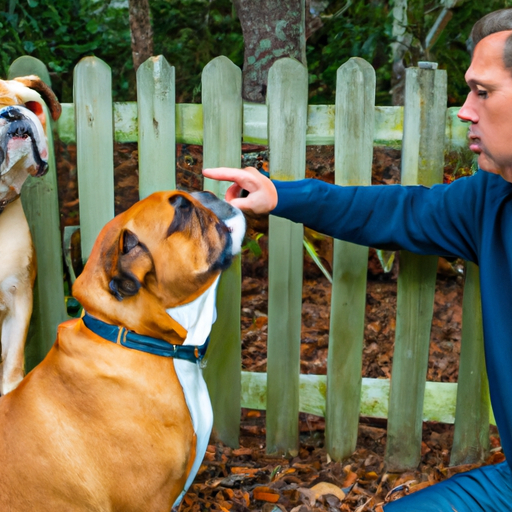Understanding Your Dog
You are the heart and soul to your furry friend. You’re their caregiver, their guide, and their biggest advocate. Therefore, it’s crucial that you understand their behavior and what triggers their aggression.
Aggression in dogs can be caused by a multitude of factors, which may include:
- Fear
- Territorial behavior
- Possessiveness
- Illness
- Frustration
It’s important to remember that aggression is not a reflection of the dog’s character, but rather a reaction to certain circumstances.
Preparing for the Introduction
Before introducing your dog to another, it’s crucial that you prepare properly to ensure the best possible outcome. This includes:
- Establishing control: Make sure your dog sees you as the “pack leader”. This will make the introduction process smoother.
- Neutral territory: Choose a location that is unfamiliar to both dogs to prevent territorial aggression.
- Leashes at the ready: Keep both dogs on leashes initially. This gives you control and prevents the situation from escalating.
The Introduction Process
Now, let’s walk through the process of introducing your aggressive dog to another dog.
- Start by keeping both dogs on leashes and at a safe distance.
- Allow them to see each other without direct contact.
- Watch their body language closely – look for signs of relaxation or agitation.
- Gradually decrease the distance between the two dogs, while closely monitoring their reactions.
| Positive Signs | Negative Signs |
|---|---|
| Wagging tail | Raised hackles |
| Relaxed body | Snarling |
| Interested sniffing | Growling |
Post-Introduction Period
The introduction isn’t the end of the story. It’s pivotal that you continue to monitor both dogs and reinforce positive behavior. Here’s how:
- Reward your dog for calm, non-aggressive behavior.
- Maintain a calm and positive environment.
- Gradually increase the amount of time they spend together.
- Ensure both dogs have their own space where they can retreat to if they feel the need.
Dealing with Continued Aggression
In some cases, despite your best efforts, the aggression may persist. In such scenarios, do not hesitate to seek professional help. A trained behaviorist or a veterinarian can provide valuable insights into managing your dog’s aggression.
Frequently Asked Questions
Q1: Should I punish my dog for aggressive behavior?
No, punishment can often escalate the aggression. Instead, focus on rewarding positive behavior.
Q2: What if my dog is still aggressive after multiple introductions?
Seek professional help. Continued aggression is a sign that your dog may need more intensive training or medical intervention.
Q3: How can I prevent my dog from becoming aggressive?
Early socialization, consistent training, and a positive environment can help prevent aggression in dogs.
Q4: Can certain breeds be more aggressive than others?
While some breeds may be perceived as more aggressive, aggression is not breed-specific. It can occur in any dog, regardless of its breed.
This guide is a stepping stone to understanding and managing your dog’s aggression. Remember, every dog is different and what works for one might not work for another. Be patient, be compassionate, and most importantly, seek help when needed. You’re not alone in this journey.



